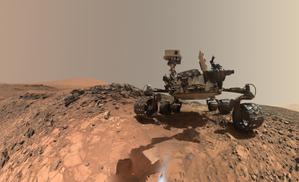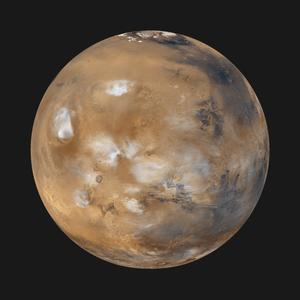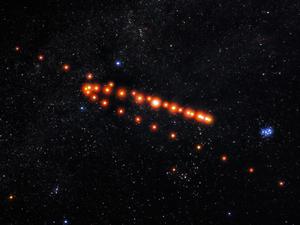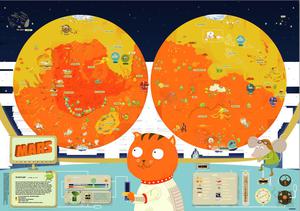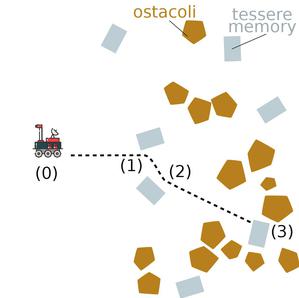Glossary term: 火星
Description: 火星是太陽系中距太陽第四顆行星。它是一顆岩石組成的類地行星,半徑略低於 3400 千米,剛剛超過地球半徑的一半。火星上有非常稀薄的大氣層、大型峽谷系統和太陽系中最高的山:一座名為奧林匹斯山的死火山。科學家認為,火星早期曾有液態水。
它與太陽的典型距離約為 2.28 億千米或 1.52 個天文單位(地球-太陽距離)。它繞太陽一週需要 687 天。火星有兩顆小衛星:火衛一和火衛二。
它以羅馬戰神的名字命名。由於火星呈紅鏽色,因此常被稱為 "紅色行星"。多年來,科學家已向火星發送了許多登陸器,以研究火星的成分和大氣層。
Related Terms:
See this term in other languages
Term and definition status: The original definition of this term in English have been approved by a research astronomer and a teacher The translation of this term and its definition is still awaiting approval
This is an automated transliteration of the simplified Chinese translation of this term
The OAE Multilingual Glossary is a project of the IAU Office of Astronomy for Education (OAE) in collaboration with the IAU Office of Astronomy Outreach (OAO). The terms and definitions were chosen, written and reviewed by a collective effort from the OAE, the OAE Centers and Nodes, the OAE National Astronomy Education Coordinators (NAECs) and other volunteers. You can find a full list of credits here. All glossary terms and their definitions are released under a Creative Commons CC BY-4.0 license and should be credited to "IAU OAE".
If you notice a factual or translation error in this glossary term or definition then please get in touch.
Related Media
“好奇號”火星車
Credit: 美國國家航空航天局/噴氣推進實驗室-加州理工學院/馬林空間科學系統公司 credit link
License: PD Public Domain icons
火星
Credit: 美國宇航局/JPL/MSSS credit link
License: PD Public Domain icons
赤道銀河
Credit: Giorgia Hofer/IAU OAE
License: CC-BY-4.0 Creative Commons 姓名標示 4.0 國際 (CC BY 4.0) icons
火星逆行
Credit: Rob Kerby Guevarra/IAU OAE (CC BY 4.0)
License: CC-BY-4.0 Creative Commons 姓名標示 4.0 國際 (CC BY 4.0) icons
Related Activities
Children's Planetary Maps: Mars
astroEDU educational activity (links to astroEDU website) Description: Explore planet Mars, learning how to use planetary maps!
License: CC-BY-4.0 Creative Commons 姓名標示 4.0 國際 (CC BY 4.0) icons
Tags:
Maps
, Planetary cartography
Age Ranges:
6-8
, 8-10
, 10-12
, 12-14
Education Level:
Middle School
, Primary
, Secondary
Areas of Learning:
Social Research
Costs:
Free
Duration:
2 hours
Group Size:
Group
Skills:
Analysing and interpreting data
, Asking questions
, Constructing explanations
Driving on Mars
astroEDU educational activity (links to astroEDU website) Description: An educational interdisciplinary game to drive a rover on Mars
License: CC-BY-4.0 Creative Commons 姓名標示 4.0 國際 (CC BY 4.0) icons
Tags:
Game
, robot
, robotics
, simulation
, telecommunications
Age Ranges:
14-16
, 16-19
Education Level:
Middle School
, Secondary
Areas of Learning:
Guided-discovery learning
Costs:
Low Cost
Duration:
2 hours
Group Size:
Group
Skills:
Communicating information
, Developing and using models
, Using mathematics and computational thinking
